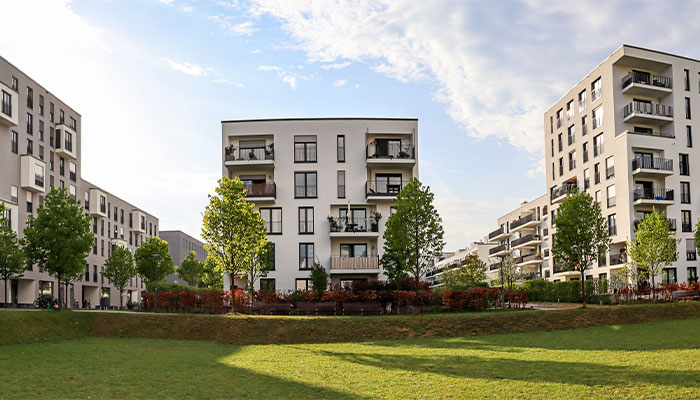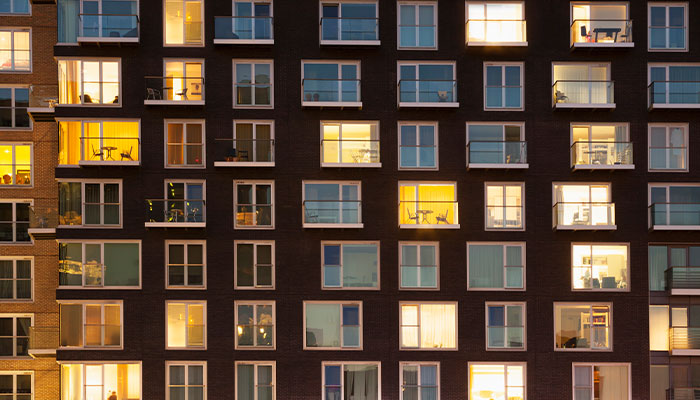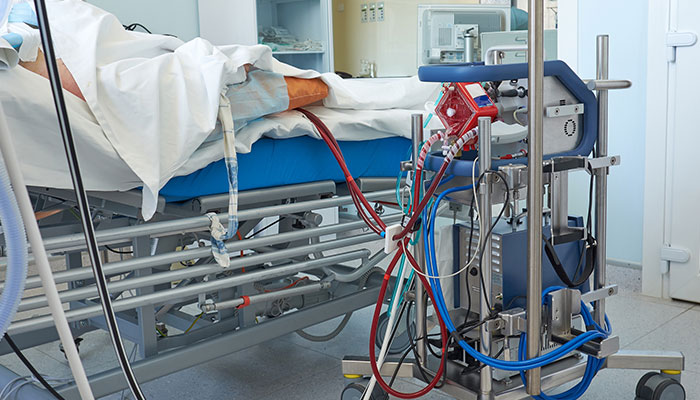More than one-third of people in high-rise apartments have reported feeling more lonely since the COVID-19 pandemic began.
In a Macquarie University study into high-density living across five Sydney suburbs, 35 per cent of 114 residents who filled out online questionnaires agreed they were more lonely as a result of lockdowns and other social restrictions wrought by COVID-19.

Age factor: 42 per cent of apartment residents who reported feeling more lonely were aged between 18 and 29.
Those reporting loneliness were more likely to be renters, without children and young: 42 per cent of them were aged between 18 and 29; 36 per cent were under 50.
These and other findings have provided a unique insight into the experience of living in high-rise flats in a pandemic – and what can be done to improve the quality of high-density living not only during a public health crisis, but in the long-term as apartment developments proliferate.
The research focused on five Sydney suburbs – Macquarie Park, Epping, Chatswood, Parramatta and Bankstown – which are characterised by a culturally diverse population living in high-density neighbourhoods.
People are making use of public space, and open spaces in a renewed way, because they are required to stay at home.
Two of those suburbs, Parramatta and Bankstown, are located in the eight local government areas that are at the centre of the current Covid outbreak, its residents facing stricter lockdowns than the rest of greater Sydney – including being restricted to a 5km radius around their homes. Australian Bureau of Statistics figures show that In Parramatta, 75 per cent of high-rise residents are migrants; in Bankstown, the figure is 59 per cent.
The data was gathered by a team led by Macquarie University urban geographer Dr Miriam Williams as part of the Vertical Villages: Community, Place and Urban Density pilot project, a partnership between Macquarie, Baptist Care and Churches Housing borne from concerns over lack of community facilities in high-density neighbourhoods and rising levels of social isolation. The final report will be released later this year.
Crying out for green and open space
The project was conceived and started before the pandemic hit, but researchers took the opportunity to ask residents about their Covid experiences, and also to seek reflections from experts in urban design, architecture and community development about Covid’s impact on design and how people use space.

Great outdoors: The COVID-19 pandemic has underlined the need for green and open spaces to be incorporated into the design of apartment complexes.
“There were some reflections about the need for consideration of particular built design elements such as ventilation in apartment complexes – more opening windows, less air conditioning, more flow of air; and also more open designs for foyers to allow circulation of fresh air that enables people to congregate in spaces that are not enclosed,” Williams says.
The research also consistently pointed to a need to consider the types of open and green spaces and community facilities available within and adjacent to high-rise complexes.
- Was activist Bill Onus our first Aboriginal film-maker?
- Please explain: Why are honey bees so important?
“Residents really did say they wanted more access to green and open space, and garden and other outdoor spaces; they saw that as important for their sense of wellbeing, and part of that was because of the lockdown,” Williams says.
“People are making use of public space, and open spaces in a renewed way, because they are required to stay at home.
“Right now, we need to be conscious of that need to access outdoor green space, and of residents’ ability to access social infrastructure in a way that is safe or within the health limits as well.”
Apartment living is here to stay
In Australia, one in 10 people live in apartments, with 85 per cent of these people living in apartments in major cities, the report says. In Sydney in 2016, more than a quarter of homes were apartments, and the proportion of apartment buildings that were four or more storeys – the ABS definition of high-density – had grown to 46 per cent, compared to 33 per cent in 1996.

Close quarters: 85 per cent of apartment-dwelling Australians are in major cities, and in Sydney, more than a quarter of homes are apartments.
Among the Vertical Villages survey respondents, 37 per cent agreed the pandemic made living in an apartment harder, while 37 per cent disagreed.
Similarly, fairly equal numbers diverged on whether they were more lonely – while 35 per cent agreed that they were, 38 per cent said they were not, those respondents more likely to be over 50, non-renters, and living with children.
The responses to other questions were more definitive: “The apartment was seen to be suitable for studying and working from home – 77 per cent agreed with this statement,” Williams says.
Designing apartments with people’s ability to have families and grow old and age well in those apartments is integral.
“Overwhelmingly, at 89 per cent, they also agreed that they were able to stay physically distanced, which is helpful.”
The pandemic could be a catalyst for a renewed focus on how apartment living – which, in the face of declining housing affordability, is an increasingly necessary option – can be improved, Williams says.
“There is always the potential for crises to produce new social movements in ways that are positive; if the pandemic assists us in thinking about high-rise living as a form of living that we need to do well, then that is really positive.”
Design and community are key
The study, says Williams, puts together two key elements: the types of high-rise design features that enhance a sense of wellbeing and community connection, and also the types of community development and ‘placemaking’ activities – such as group activities, community gardens, markets and festivals – that can enhance connection and wellbeing.
But turning high-rise complexes into vibrant places of community connection requires commitment to make it happen.
“That job is one that needs a range of different actors to take responsibility – the residents themselves, the developers who design apartments in particular ways, governments who have design guidelines, and also others – such as faith-based organisations – who might have expertise in facilitating community connection,” Williams says.
At the moment, high-rise developments in Australia tend to be one- and two-bedroom apartments that “cater to the lifestyle of mobile renters and the financial objectives of investor landlords”, the report points out.
However, the reality on the ground is far different, says Williams, with more and more people choosing to live permanently in apartments. Yet of the survey respondents, 32 per cent said their apartment was not at all suitable for hosting visitors.
“The research showed that designing apartments with people’s ability to have families and grow old and age well in those apartments is integral, because these apartments aren’t going anywhere … and we can’t just assume that everybody wants to, or can afford to, live in a house,” Williams says.
“I think it is important that people design apartment living in a way that is seen as a long-term option for residents who prefer high-density living, rather than as a transitional form of housing.”
Dr Miriam Williams is a Lecturer in the Macquarie School of Social Sciences.



